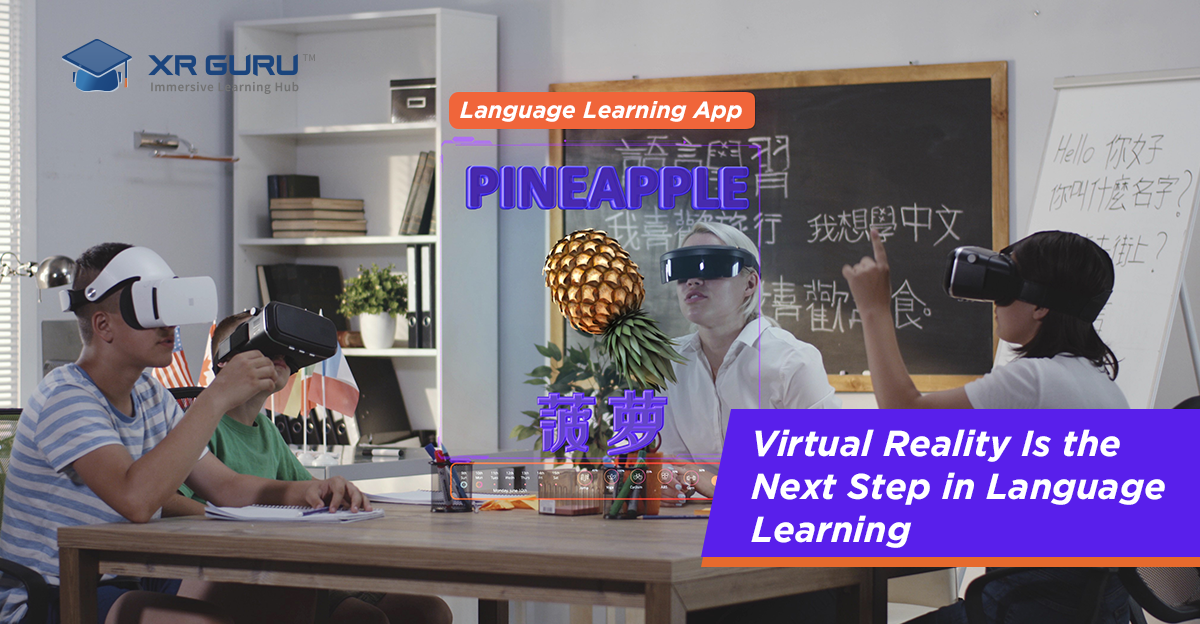Virtual Reality is the Next Step in Language Learning

But, let us be honest, learning and mastering a new language is challenging.
When it comes to learning a new language, a lot of effort is required. From taking classes, reading books, watching foreign language movies, attempting quizzes, the list goes on. Further, gaining fluency often requires an immersive, interactive experience like speaking to a native speaker and observing other cultures. However, traveling to a foreign country and conversing with native speakers is not feasible for everyone, especially with the strict travel restrictions post COVID-19 pandemic. No problem, virtual reality is an effective alternative for efficient language learning. The widespread availability of VR devices has propelled virtual reality learning to prominence. VR learning is proving to be a robust technology to bolster engagement, understanding, and retention. In this blog post, we explore the use of virtual reality in language learning and the benefits of VR learning.
Why Should You Consider Virtual Reality Learning?
Here are some reasons why you should opt for VR-based courses for language learning.
Immersive Experience
Virtual reality offers an immersive learning experience to hone your linguistic skills. Interactive VR learning is more engaging than just reading textbooks or watching videos. Experts say conversing with native speakers in real-time is the best way to learn a new language. However, interacting with a native speaker can be intimidating and a bit awkward or downright terrifying. Virtual reality learning presents an opportunity to practice your skills without any fear. Virtual reality can create life-like simulations, thereby helping you to react in real-life scenarios. For instance, using VR, you can participate in different scenarios, such as ordering food from a restaurant or booking a hotel room.
Meaningful Content
Nowadays, people are using mobile applications to learn languages; while these apps are better than just textbooks, they also have limitations.
Some traditional learning apps often present only monotonous sentences like "The bear eats honey," which are of little use in real-life conversations. But VR learning courses are not limited to a set of default phrases. Virtual reality applications can offer thousands of expressions and interactive responses that make you almost forget you are talking to a computer-generated program.
Learn Anytime, Anywhere
You no longer need to travel abroad to have meaningful conversations with native speakers. VR simulations eliminate the need for travel for you can learn from remote locations. The argument can be made speaking to a computer program is not like talking to a human. While there is an element of truth to the previous statement, VR learning certainly has its advantages. It may not be well advised to call your human teacher in the middle of the night, but in virtual reality learning, you can access the content anytime and repeat an exercise as often as necessary and get constructive feedback. Also, VR programs use native recorded voices and natural sounds, so it is not like you are talking to C-3PO from Star Wars.
Benefits of Virtual Reality Language Learning
Here are a few advantages of using VR learning to become a multilingual.
1. Better Retention Rates
Seeing engaging 3D visuals, 360° videos, and participating in immersive simulations have proven to produce better retention rates. According to the National Training Labs, USA, the retention rate is 75% for VR learning, whereas it is as low as 5% and 10% for traditional methods like lectures and reading respectively.
2. Enhanced Learner Engagement
Interactions with VR simulations and gaming elements account for a more engaging learning experience. Furthermore, virtual reality's fully immersive nature helps to eliminate distractions that are often involved in conventional learning techniques.
3. Confidence Booster
Conversing in a foreign language, especially in the early days of learning, can be a challenging and nerve-wracking experience. For instance, try ordering food from a restaurant in a foreign language. People often wish to practice these activities before attempting them in real life. VR learning offers just that- a platform to practice multiple times until you become confident. A study shows that learners are more confident in applying their skills after a VR training session.
Concluding Thoughts
Virtual reality learning has immense potential, and it can transform the way we learn, inspiring the next generation to innovate and create better solutions for a secure future. Many institutions around the world are beginning to adopt VR in their teaching process and realize the potential it offers in education. VR is gaining prominence in diverse fields, and with the price of VR equipment dropping, there has never been a better time to invest in virtual reality learning.
Do you wish to implement VR in your learning process? XR Guru is a next-generation application that brings learning to life through immersive experiences. With tools to learn, create, and distribute, XR Guru, is a one-stop solution for all your virtual reality learning needs.
Contact us for a free consultation on your virtual reality learning needsClaim Your Free Consultation



Comments
Post a Comment